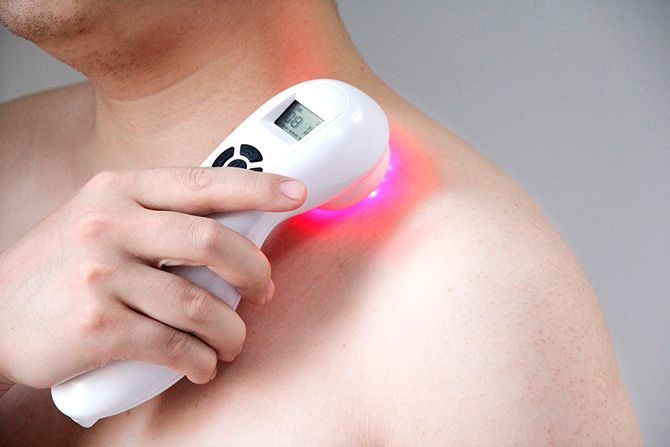Low-level laser therapy (LLLT) also known as the cold laser is a non-invasive form of phototherapy that utilizes wavelengths of light in the visible to a near-infrared range of 670–950 nm.
What it does:
- Stimulates cell growth
- Enhances cell metabolism (increased ATP production by mitochondria and increased oxygen consumption at the cellular level)
- Improves cell regeneration
- Reduces fibrous tissue formation
- Stimulates long-term production of nitric oxide
- Reduces the formation of bradykinin, histamine, and acetylcholine
- Increased serotonin and increased endorphins
Physical system:
Low-level cold laser treatment or near-infrared light penetrates only 10 mm of skin and affects the mitochondria. Specifically, it releases NO from cytochrome c allowing the electron transport chain to resume production of ATP and reactive oxygen species and reactive nitrogen species. The increased reactive oxygen species increases the overall redox potential of the cytosol leading to greater oxidation.

Lasers can also be set to pulse on and off in one duty cycle or superposes. A duty cycle means that the power is one for part of a second and off for part of a second and a superpose is a very fast duty cycle. Duty cycles can be used to increase healing times without increasing the amount of energy delivered to cells.
Interesting fact:
Laser therapy is often described in joules or how much energy is being emitted. Energy levels can be achieved through extended periods with a lower level laser or over a shorter period with a higher level laser. Studies on bilingual dose-response suggest that a shorter period would be more beneficial in many cases.
What light therapy can do for you:
Light therapy will speed up the recovery response in muscles and tendons. A warm sensation can be expected during treatment that lasts for about five minutes and pain relief is usually experienced immediately after treatment.